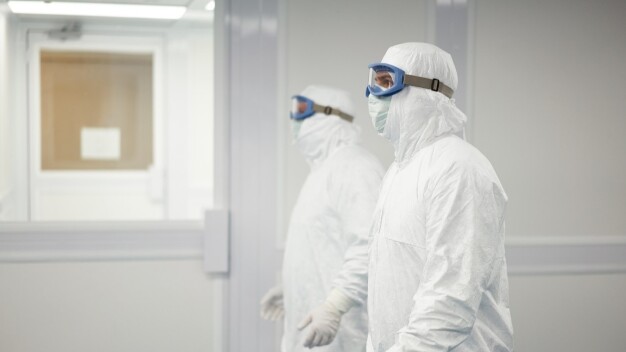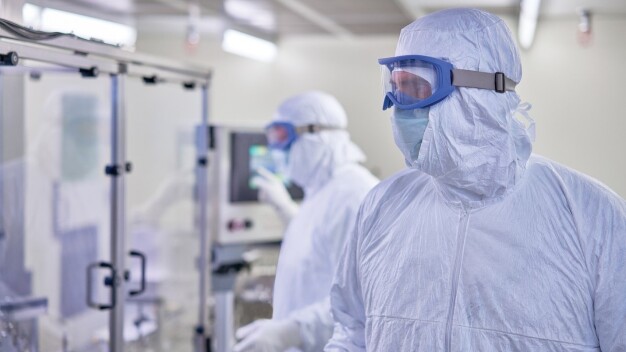- Overall
Steve Marnach
HPAPI Manufacturing: Here's How Protective Clothing Can Help Keep Workers and Products Safe
Highly Potent Active Pharmaceutical Ingredients (HPAPI) are a primary source of medical innovation. Their ability to target cells selectively enables researchers to develop tailored, patient-centred care with maximal efficacy but minimal side effects. Such is the impact of HPAPI on medical development that the market is growing at more than 10% annually and is forecast to reach US $40 billion by 2027. (1)
However, HPAPI are classified as hazardous substances because even limited exposure could impact workers' health. At the same time, high-value pharmaceutical products containing HPAPI are vulnerable to contamination by foreign materials like skin cells or sweat from workers. Selecting appropriate protective clothing is critical to addressing both risks.
Safety risks and how cleanroom garments protect workers
Pharmaceutical workers could come into contact with HPAPI during several stages of production, like preparation of ingredients, formulation, sterilisation, fill and finish, and cleaning and disinfecting. The primary risk of exposure is inhalation, followed by dermal exposure. Personal protective equipment is essential to protect workers from exposure to HPAPI in any form.
A critical step in protecting workers from these hazards is a risk assessment. During this process, key questions can help to identify the hazards and assess the risks. The assessment should indicate the physical state of the HPAPI (solid, liquid, waxy, or gas). It should also list how each ingredient could enter the body systems (inhalation, accidental injection, dermal absorption, etc.) depending on the manufacturing activity inside the cleanroom. Lastly, the risk assessment should highlight the PPE requirements to mitigate these risks.
European regulation 425/2016 lays down requirements for the design and manufacture of PPE. Specific tests are used to verify the performance of a garment depending on the physical state of the hazardous substance:
– EN ISO 6530 or EN ISO 17491-4 test the liquid penetration of a garment.
– EN ISO 13982-2 tests the solid particle penetration of a garment.
– EN ISO 6529 or ASTM F739 test the liquid or gas permeation of a garment.
Contamination risks and how cleanroom garments protect product quality
Research shows that human beings represent the primary risk of product contamination in cleanrooms. 75% of contamination comes from skin flakes and bacteria that the human body constantly sheds or from fabric fibres and particles shed from protective garments. (2) Specific tests are used to verify the performance of a garment in terms of cleanliness or barrier to skin flakes shed by the wearer:
– EN 143 is a particle filtration efficiency test.
– ASTM F2101 is a bacterial filtration efficiency test.
Besides the quality tests that measure permeation performance, garments designed for operator comfort and breathability can help to limit the number of particles shed by an operator. Breathable materials like DuPont™ Tyvek® material are low linting which can help reduce operator sweating and help to lower the contamination risk. Garments that allow freedom of movement have a similar effect, reducing operator discomfort and, therefore, particle shedding.
GMP1 Annex provisions for HPAPI manufacturing cleanrooms
Good Manufacturing Practice (GMP) Annex 1 (3) classifies cleanrooms into four grades using the maximum allowable number of airborne particles per cubic meter of air. Grade A has the most stringent criteria, with a maximum total number of particles of 3,520 ≥ 0.5 µm/m3. Grade D has the least stringent requirements with a maximum total number of particles of 3,520,000 ≥ 0.5 µm/m3. GMP Annex 1 specifies the garment requirements for each cleanroom class based on activity type and contamination risk.
Grade A/B cleanrooms present a lower risk of exposure to hazardous materials, but workers could still be exposed to finished-dose HPAPI. On the other hand, preventing product contamination in Grade A/B cleanrooms is highly critical. Protective garments in these cleanrooms should meet both the GMP Annex 1 requirements and the PPE safety requirements.
Operators handle larger quantities of HPAPI at higher potencies in Grade C/D cleanrooms compared to Grade A/B. For this reason, operator protection takes priority over cleanliness requirements in these environments. Protective garments are categorised according to their protection levels.
A safer future for HPAPI production
HPAPI manufacturing has enabled significant pharmaceutical developments due to their targeted pharmaceutical action. The market growth in this sector highlights the importance of HPAPI manufacturing and the vital need to adhere to cleanroom requirements for both operator protection and preventing product contamination.
GMP Annex 1 categorises cleanrooms according to the risk of exposure to hazardous substances. Different garment requirements are specified according to the risks associated with the activities. At the same time, PPE regulations specify the level of protection required for operator safety depending on the form of the hazardous substance and the risk of exposure. It is vital for HPAPI manufacturers to understand the various regulatory requirements and to select the best protective garments for their applications.
To download DuPont’s The HSE Manager’s Guide to Cleanroom Garments for HPAPI Manufacturing visit: https://www.dupont.co.uk/personal-protection/pharmaceutical-industries-ppe.html?src=EMEA_EN_SafetyPersonalProtection_GB_PR_External_HPAPIEguide#hpapi
(1) https://www.marketsandmarkets.com/Market-Reports/high-potency-api-market-36582475.html
(2) Ramstorp M., „Introduction to Contamination Control and Cleanroom Technology“, Wiley VCH, 2000, Weinheim (Deutschland)
(3) https://health.ec.europa.eu/system/files/2022-08/20220825_gmp-an1_en_0.pdf

DuPont de Nemours (Luxembourg) Sa rl
Rue General Patton
L-2984 Contern
Luxembourg
Phone: +352 3666 5111
email: mycustomerservice.emea@dupont.com
Internet: http://dpp.dupont.com










